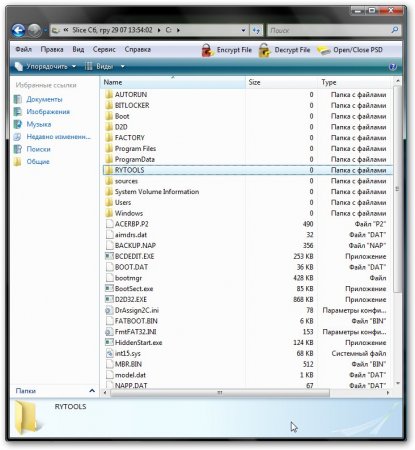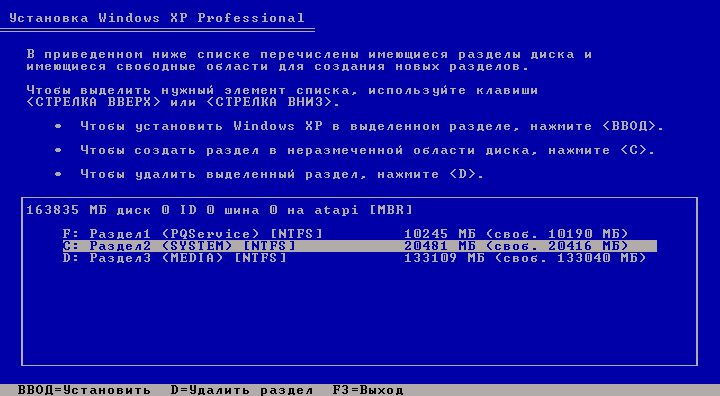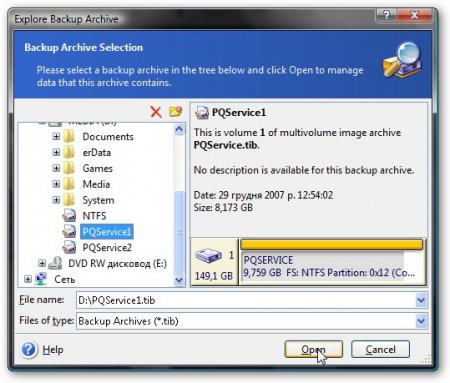
Somebody who tried to follow the first method but did not succeed to find the 2 files found another solution to restore the partition. Now ALT F10 should work and run the Acer Erecovery when the laptop start. Close the command prompt, reboot again your laptop, reactivate the D2D recovery in the bios.
How to use ptedit32 to enable pqservice partitio windows#
When localized open a command prompt windows as an administrator and enter this command “mbrwrdos. (The name of these two files can be different sometimes) Reboot and now you should be able to navigate inside the PQservice partition. Once made change the type of your partition into 0C(FAT32) or 07(NTFS) and save. On a functional FAT32 Windows system the partition table values are OC or OB for installable FAT32 system files and 12 or 1B for Hidden FAT32 partition, for a NTFS system the known partition table values are O7 for installable NTFS files system and 27 for Acer custom hidden NTFS partition:ġ/ Go in the bios and disable the D2D recovery option.ģ/ Identify the PQservice partition by its size (there is an information box at the bottom of the partedit window) it is the small sized partition approximately 4 to 9 Go. You can reinstall the Acer MBR if the partition PQservice is present or if you can have access to the necessary files. Yes much of attempts to restore fail because of this condition.ī An other common problem the Acer Master Boot Record (MBR)is damaged, or replaced by the MBR of another system. Simply doing it, everything turned fine and the recovery worked perfectly. Note: For all the following solutions take into account the Max advice, I quote Max now, a contributor in my site « But I want to mention the way I sorted out the thing, because it's very rarely mentioned on the web.Īll the methods to repair the D2D Alt f10 issue are knowledgeable and smart but all of them forget to say a fundamental thing:įirst of all you have to rebuild with a partition soft the D:Acerdata FAT32 empty partition that almost everybody deletes cause is usually empty. Solution: Enable the function by pressing F2 during the boot to access the bios menu and change the setting, then reboot and press keys ALT F10 during the starting of the laptop. There are many possible causes, but most common are:Ī The function D2D was disabled in the bios.

Normally this system launches out while pressing simultaneously keys ALT F10, but sometimes that does not function. Any modification and/or damage done on your laptop will be under your responsibility.Īs you know now the Acer laptops and those of other manufacturers are now delivered with a restoration system installed in a hidden partition (PQservice for Acer)on your hard disk. One step further if so, then I don't need to include PQSERVICE in the SSR backup routine as I already have that partition imaged and copied to DVD back on day one.Disclaimer: First of all backup your system before launching you in any hazardous operation, some of the operations to come can cause data loss.

I believe that the hidden partition PQSERVICE is indeed the same factory image applied to a raw disc off the assembly line and is thus the same one used when creating the Acer's Factory eRecovery disc back in the first paragraph when the system is first fired up.

But PQSERVICE is quite large but always smaller than C:\. I believe D:\Data should be included though I don't know what it's purpose is - it's usually quite small. I know that C:\ is an obvious choice and SSR's documentation states SYSTEM RESERVED is required in order that image be bootable when recovered. These partitions/discs are labeled: SYSTEM RESERVED, C:\, D:\Data, and PQSERVICE. Thus, in the interface, SSR now identifies 4 "discs" on each Acer (that's why I came here). Today, I rather stumbled upon and discovered that SSR has a checkbox to expose "hidden discs". In the SSR interface, when setting the scheduled backup, it's easy to simply choose the entire computer once a week (base image day) and then an incremental every other day until the next base.

Others don't - everyone has their favorites. Now, I'm also now using Symantec System Recovery 2011 (SSR) as my backup tool of choice. Anyway, I have 14 sets tucked away safely. Yes, I quite realize that might have been overkill because one image would have worked satisfactorily on each version. When I set these up out of the box, I did go through the procedure to create a factory re-install disk for each one seperately and individually. We have 7 Acer M265s (Win XP) and 7 Acer VX275s (Win7 Pro).


 0 kommentar(er)
0 kommentar(er)
